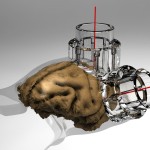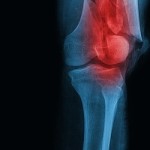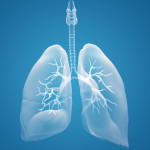Aerated Drinks and Appetite Control

Incorporating air into food ingredients by sieving, creaming, whisking or beating makes them lighter and creates more volume. Several studies have shown that the consumption of aerated foods leads to increased satiety and helps control hunger, but the way aeration contributes to satisfaction is still not fully understood. In a recent study, researchers from the…
Early-Life Stress and Pituitary Gland Development

Whenever a stress response is triggered, the hypothalamus at the base of the brain is activated and stimulates the pituitary gland, which in turn helps regulate the activity of other hormone-secreting glands. As the mediator of stress management, the pituitary gland may be highly affected by stress dysregulation. A recent study carried out at the University…
Can Triglyceride Content Predict Metabolic Effects of Weight Gain?

Along with obesity comes a wide spectrum of other health problems, such as metabolic complications, that come under the heading of metabolic syndrome. This syndrome consists of a group of conditions – anomalous cholesterol levels, increased blood sugar values, extra body fat around the waist, hypertension, and above all, insulin resistance – that may cause…
Custom-fit Cranial Implants for Neurophysiological Assessment

Chronically implantable devices take on an important role in the study of the functioning of the nervous system and have experienced a compelling evolution over the last decade. Cranial implants are used to electrically stimulate or record neural activity in the brains of awake behaving animal models. The implantation of these devices often leads to complications…
Distinguishing between Cell Populations in Glioblastoma Multiforme

Glioblastoma multiforme is the most common type of brain tumor and the most malignant and fatal. Some of the features that make this disease extremely difficult to treat are its aggressive invasiveness, high proliferation rate and resistance to standard treatments. In fact, this particular tumor consists of many different types of cells and while some…
The Impact of Coronary Artery Stenosis on Renal Injury

Coronary artery disease occurs when the arteries that supply blood to the heart become hardened and narrowed (stenosis) due to the accumulation of cholesterol and other fatty substances on their inner walls. The restriction in blood supply causes a shortage of oxygen and glucose to the heart that may not only impact the myocardial tissue,…
The Furlow Palatoplasty in Cleft Palate Repair

Cleft palate and cleft lip occur when a baby’s palate or lips don’t form properly during early pregnancy. These common birth defects take place if the tissue that makes up the roof of the mouth or the lip does not join completely before birth, leaving an opening. Nowadays, a series of reconstructive surgeries can correct…
Bone Healing in Physiological and Osteoporotic Bone

Bones are made of living and growing tissue that is constantly being broken down and replaced. Osteoporosis is a disease that occurs when bone is removed too quickly or replaced too slowly, resulting in a gradual loss of bone mass, and a subsequent increased fragility that predisposes patients to elevated risk of fracture. Fracture healing…
Caspase-2 in Lung Tumorigenesis and Chemotherapy

Cancers are generally caused by protein loss or gain of function, mutations of multiple genes or impairment in the regulation of cell signaling pathways. Dysregulation of caspases, proteins that act as effectors of cell death by cleaving cellular substrates, characterize diseases including inflammatory disorders and cancers. Caspase-2 is one of the most evolutionarily conserved caspases,…
Brain Changes Associated with Chronic, Heavy Cannabis Use

Several recent studies indicate that heavy cannabis usage appears to be associated with significant structural changes of key brain regions over time. With recent legal changes in social and medical consumption of cannabis in several countries, questions over the drug’s effects on the morphology of brain structures continue to arise. The psychoactive ingredient in cannabis is…
 AnalyzeDirect
AnalyzeDirect